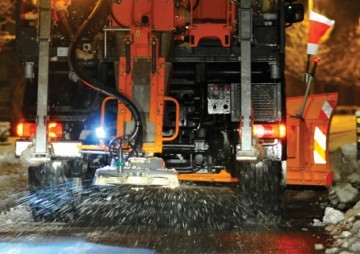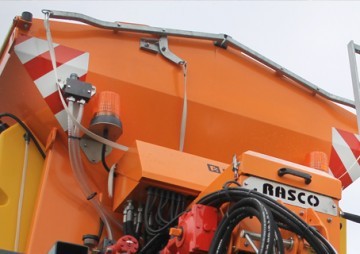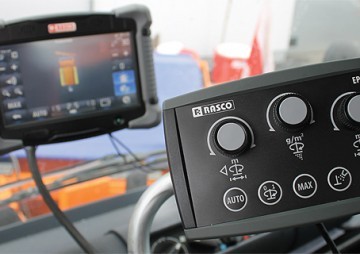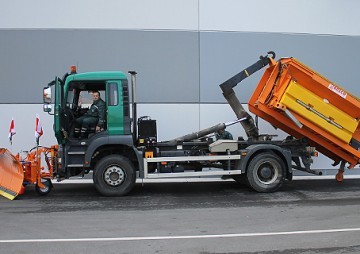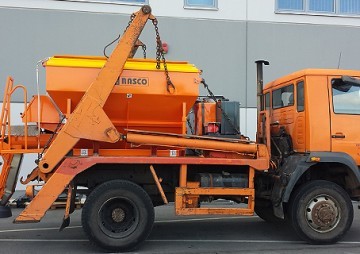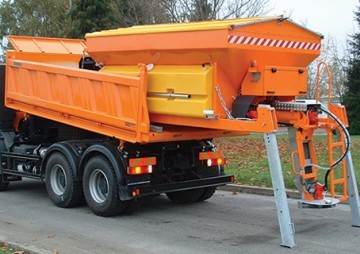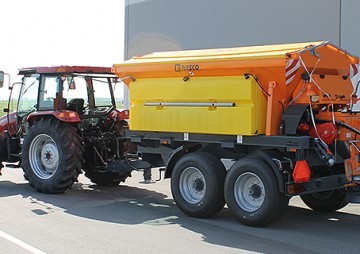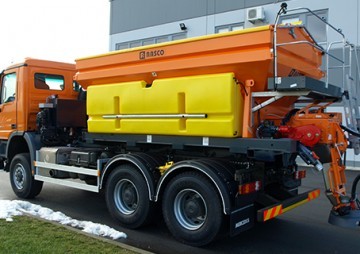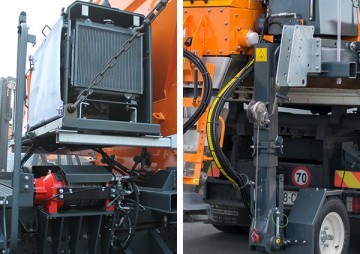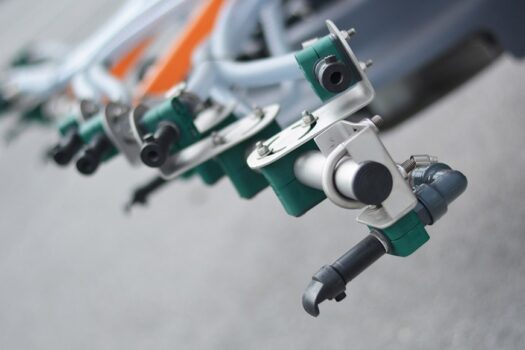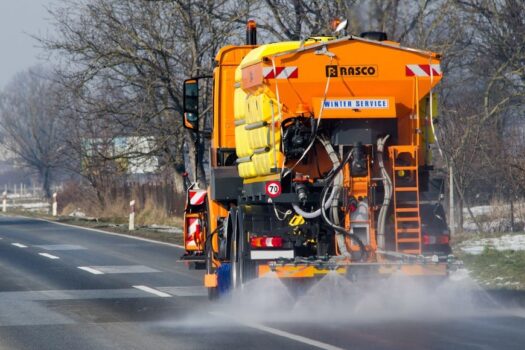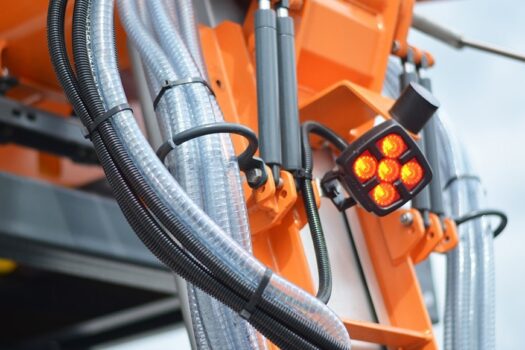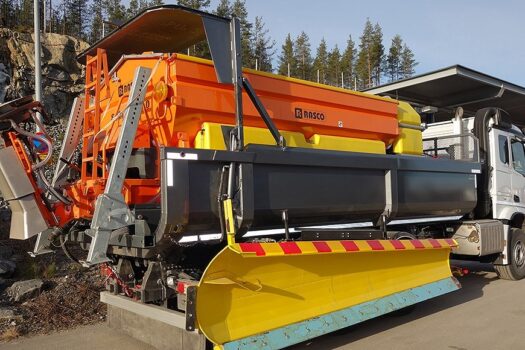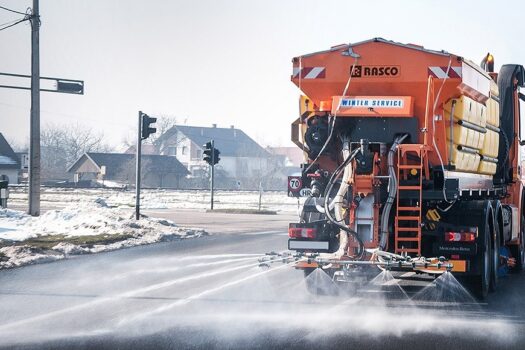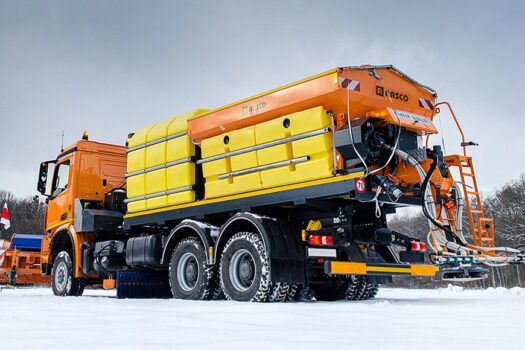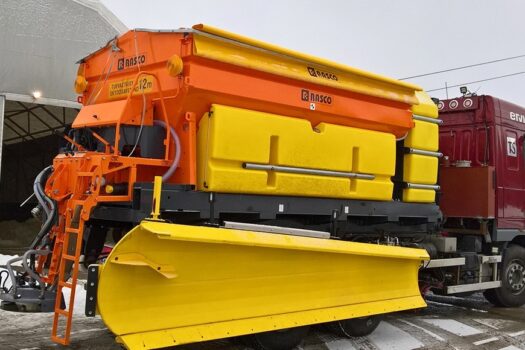The three basic versions of SOLID salt spreaders differ in one key feature – the type of system used to transfer the spreading material to the disc spreader. The choice of transfer systems depends on the type of solution used.
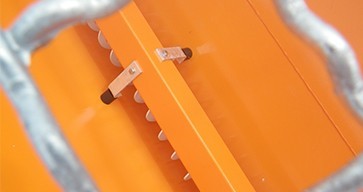
SOLID X
SOLID X is the best choice for spreading materials such as salt, sand or stone grains with low moisture content. The accuracy and efficiency of working with SOLID X is a result of the arithmetic spreading system.
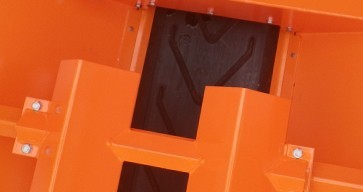
SOLID T
The salt spreader is intended for distribution with dry materials of low or medium humidity. The reliability of the spreader is ensured by the conveyor belt used to supply the material.
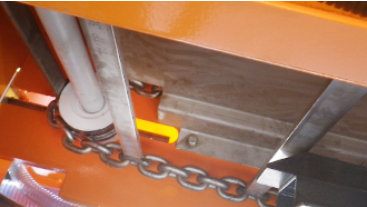
SOLID L
This salt spreader is specially designed to work with the most difficult spreading materials, such as wet sand with a high percentage of clay, coarse sea salt or a mixture of different materials. The high reliability and efficiency of the spreading is guaranteed by a strong conveyor chain, which prevents the formation of gaps in the container, regardless of the quality of the spreading materials.
The operation of all RASCO salt spreaders is controlled by the EPOS control modules. Their development by RASCO specialists makes them the leading solution for the control and monitoring of distribution operations. EPOS controls are used to control all parts of the salt spreaders. The control of the spreader hydraulics in combination with the control and feedback system ensures high-precision distribution in all working conditions, while the automated calibration system allows the quick and simple adjustment of the spreading system. The spreading parameters are not lost when the control module is switched off and can be activated automatically the next time the spreading operation starts again.
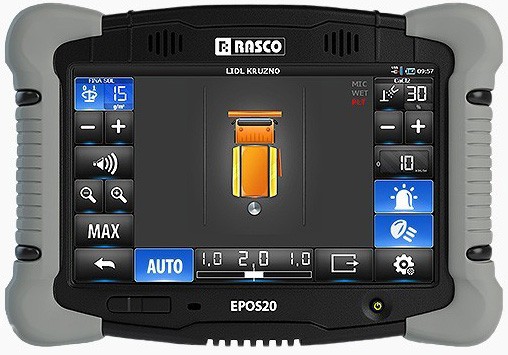
ARMS is an information and communication system for the control, central monitoring, reporting and optimization of road maintenance activities. Real-time monitoring of working hours of people and machinery as well as resources used (such as salt used, vehicle fuel, etc.) provides the information needed to make immediate and valid decisions to save resources. Unchanged logs protect the user from liability by providing clear information about any action taken, while the reduced consumption of spreading material simultaneously protects the traffic infrastructure and the environment.
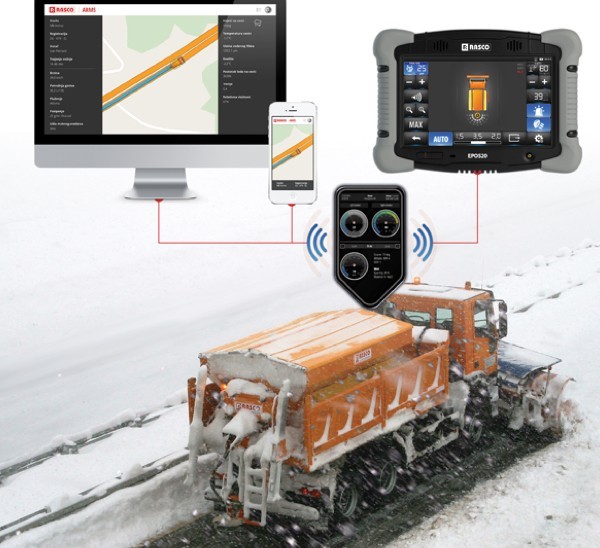
It can be done via the vehicle’s hydraulic system or via an independent diesel engine mounted on the spreader frame.







